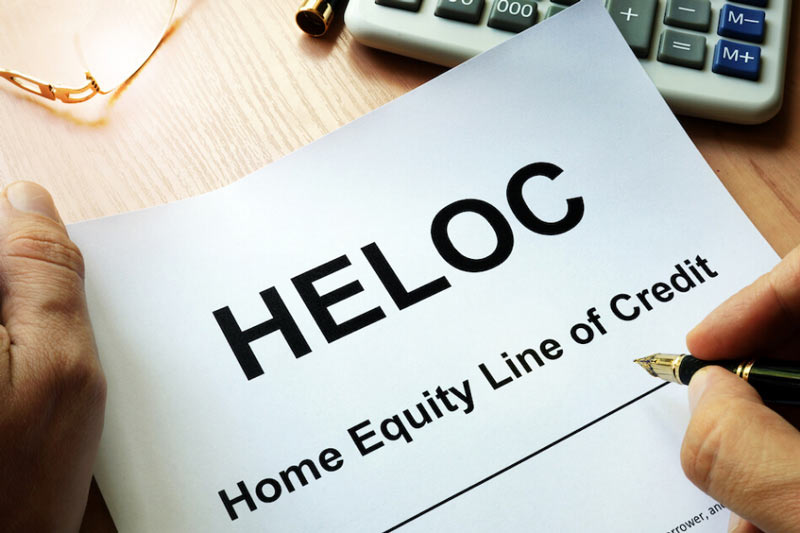How to Get a HELOC on an Investment Property
Triston Martin
Nov 14, 2023
Are you looking to unlock the equity of your investment property? A Home Equity Line of Credit (HELOC) can be a great tool for investors who want to leverage their assets and access additional capital. But while HELOCs are beneficial, it's important to understand how they work and what qualification factors come into play.
In this blog post, we will provide an overview of how a HELOC works on rental properties, provide an in-depth look at the application process, review tips for success when applying for a HELOC for your rental, and explore other financing options that might be available as well. Let's get started!
Understand the Basics of Home Equity Lines of Credit (HELOC)

A Home Equity Line of Credit (HELOC) is a great way to access capital and maximize the value of your investment property. But it's important to understand how they work and what qualification factors come into play before taking the plunge.
When considering a HELOC, start by understanding how much equity you have in your rental property — this will determine how much credit you can borrow. Additionally, look at both short-term and long-term interest rates to prepare you for any rate adjustments over time.
Please also consider whether or not there are any fees associated with opening and maintaining a HELOC account.
To apply for a HELOC on your rental property, you must provide various forms of documentation, such as proof of income, copies of your credit report, and evidence that the property is insured.
The lender will review your debt-to-income ratio to ensure you can comfortably afford the loan payments and other debts.
Once approved, a HELOC provides access to capital for renovations or additional investments without liquidating current assets. It's important to remember, however, that if not managed properly, the cost of borrowing can quickly add up. Review all terms carefully to know what you're getting into before taking out a HELOC on your rental property.
Determine Your Property's Value and How Much You Can Borrow

When applying for a HELOC on investment property, it's important to understand the value of your property and how much you can borrow. Your lender will use this information to determine how much they are willing to lend you and the interest rate they will charge.
Your home's equity is determined by subtracting existing liens from its appraised value. The loan amount is based on what percentage of the total appraised value your lender agrees to provide. Generally speaking, lenders will allow borrowers to take out up to 85% of their home's appraised value in a loan or line of credit.
It's also important to note that different lenders may have different loan-to-value (LTV) ratio thresholds. Research your lender's policies carefully and shop for the best deals available. Also, be aware of any extra fees associated with a particular HELOC product, such as closing or origination.
By understanding how much equity your property has and what percentage you can borrow, you will have a better idea of how much money you will ultimately be able to access from your HELOC product.
Gather Necessary Documents for Applying for a HELOC
The necessary documents are important when applying for a HELOC on an investment property. Gather your most recent tax returns and copies of your rental contract that shows proof of ownership and income. You will also need proof of other assets you own, such as stocks, bonds, savings accounts, etc.
Make sure you have sufficient documentation showing the current value of any vehicles or real estate investments you may have as well. Additionally, you'll want to ensure all financial records are up-to-date so lenders can review them when considering your application. With these documents, you can get a HELOC on an investment property more easily.
Finally, discussing your plans and financial goals with your lender before applying is important. Your lender can provide advice on the best path forward and help you determine if a HELOC is the right option for you.
Compare Rates from Multiple Lenders
When securing a Home Equity Line of Credit (HELOC) for an investment property, comparing rates from multiple lenders can make all the difference. You can find the best rate and terms for your needs by shopping around and comparing offers.
Before committing, get quotes from at least three different lenders or banks. In addition to interest rates, consider factors like repayment terms and fees. Also, some lenders may offer special promotions on their HELOCs, such as cash-back rewards or no closing cost options.
By researching before applying for a HELOC, you can save money in the long run while still getting the financing you need for your rental property. Compare rates from multiple lenders and choose the best option for your specific financial situation.
Be Prepared to Pay High-Interest Rates on Investment Property Loans
When taking out a Home Equity Line of Credit (HELOC) on investment property, it is important to know that you will likely pay higher interest rates than a primary residence loan. This higher interest rate is because lenders view rental properties as higher-risk investments, thus charging more for the loan.
Rates can vary greatly depending on your credit score, income level, and other factors. It's important to do thorough research before applying for a HELOC to ensure you understand the loan's exact terms and what interest rate you'll be paying.
While these loans may carry higher interest rates than primary mortgages, they can still be useful for investors seeking additional capital. So while you should always research and understand the financial details associated with a HELOC, don't let the higher interest rates stop you from taking advantage of this financing option.
What Penalties and Fees Might Apply
When considering a Home Equity Line of Credit (HELOC) for rental property investing, it is important to understand the associated penalties and fees that could apply. Some lenders may charge a prepayment penalty, annual fee, or closing costs to secure a HELOC on an investment property.
It's also important to know that additional rates may be applied if the HELOC balance exceeds certain thresholds. Additionally, some lenders offer adjustable interest rates with HELOCs on rental properties, so investors must consider how rate increases and decreases affect their bottom line.
Understanding all potential penalties and fees can help investors make informed decisions when applying for a HELOC on their rental properties.
FAQs
What proof of income is needed for a home equity loan?
When applying for a home equity loan, you must provide proof of income, such as tax returns and bank statements. Lenders may also require additional documentation, such as rental agreements or W-2s.
How do you get equity out of a rental property?
There are several ways to access the equity from a rental property. One of the most popular methods is to get a Home Equity Line of Credit (HELOC). HELOCs allow you to borrow against your home's value and use it as collateral, allowing you to access additional capital.
What is the max LTV for a HELOC on an investment property?
The maximum loan-to-value (LTV) ratio for a HELOC on an investment property is normally 75%, meaning you must have at least 25% equity in the home.
Conclusion
Taking out a Home Equity Line of Credit (HELOC) on an investment property can be an excellent way to access the funds needed for additional investments. It's important, however, to understand the terms and conditions of such loans before committing to them. Ensure you understand the basics of HELOCs, determine your property value, and gather all necessary application documents. Always compare rates from multiple lenders to ensure you get the most competitive rate for your loan before signing any documents. Furthermore, be prepared to pay high-interest rates and any penalties or fees that may apply.







